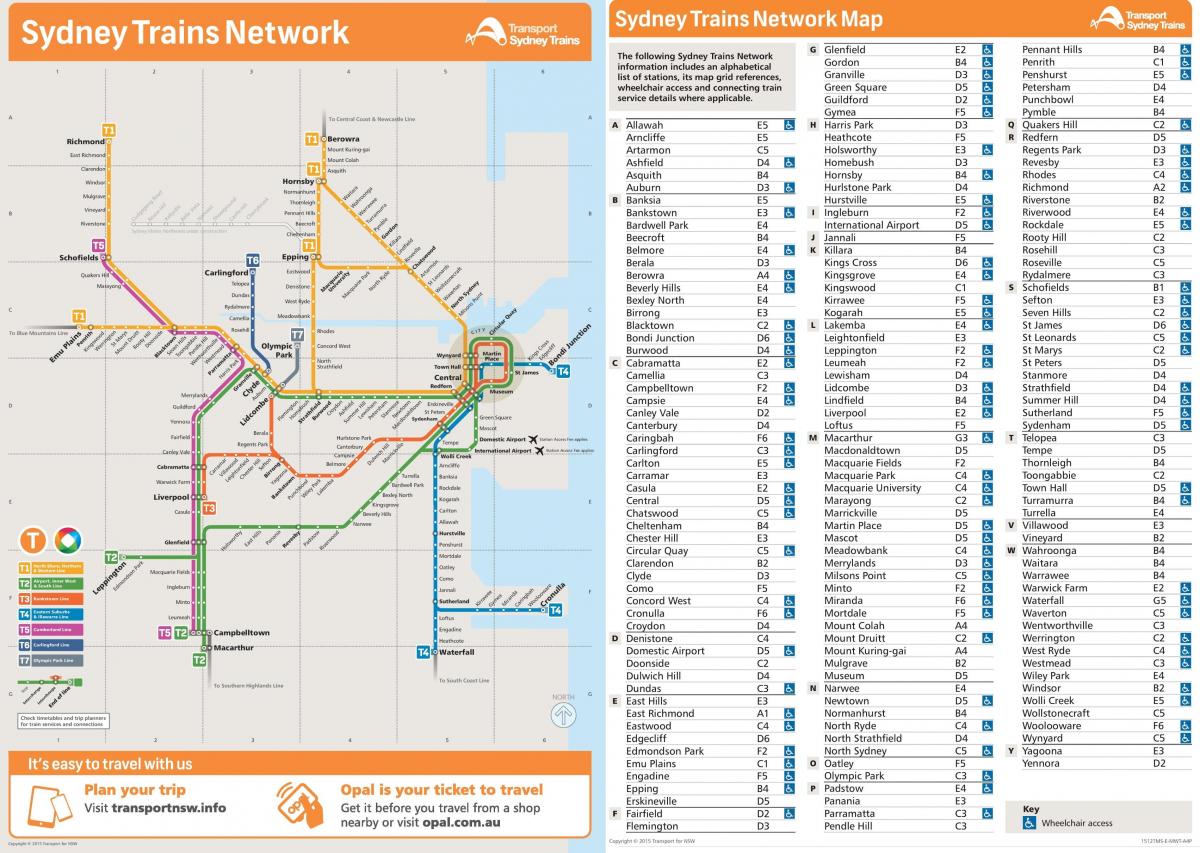search
Sydney rail map
Rail map sydney. Sydney rail map (Australia) to print. Sydney rail map (Australia) to download. Sydney, the largest city in Australia, has an extensive network of passenger and freight railways. The passenger network is a hybrid metro-suburban railway with a central underground core running at metro style frequencies, which branches out into a suburban commuter type network. The system also carries freight, and there is a separate network of freight lines, some of which are disused. Passenger service is operated in Sydney by RailCorp under the CityRail brand as its shown in sydney rail map. Trains operate for 20 hours a day, and over 1 million weekday passenger journeys are made on 2365 daily services over 2080 km of track and through 306 stations (including interurban lines). Suburban services operates along the portions of the main lines from Sydney to the north, west, south and south-west, and also along several dedicated suburban lines. All of these lines are electrified at overhead 1500 V DC, starting in 1926.
Most suburban services operate through central Sydney via the underground City Circle (a horseshoe-shaped line), the Eastern Suburbs underground line, or over the Harbour Bridge as you can see in sydney rail map. There are long term plans for a new underground line passing beneath Pitt Street to a new harbour crossing (known as MetroPitt), and a long-standing concept for a new underground line that will pass down the western side of the central business district (known as MetroWest). Whether either of these will be built remains to be seen. All suburban passenger trains in Sydney are double-deck electric multiple units. Upon electrification in the 1920s Sydney operated single-deck multiple units but these were progressively withdrawn from the 1960s until their final demise in 1993. Single-deck cars may be reintroduced if the proposed 'metro' lines are constructed.
The first railway in Sydney was opened between Sydney and Parramatta in 1855 (see sydney rail map). This railway formed the basis of the New South Wales railways and was owned by the government. Passenger and freight services were operated from the beginning. By 1880, there was half hourly service to Homebush. In 1884, the railway opened from Strathfield to Hornsby. The North Shore line opened in 1893 to a harbour side station at Milson Point, and was originally built because parliament thought it would be a shorter route for country produce from the north to Sydney Harbour (a role it has never fulfilled). Sydney first deliberately suburban railway was a line to Belmore which opened in 1896 and was soon extended to Bankstown. Sydney suburban passenger service was severely hampered by the inconvenient location of its city terminus, at a site south of Devonshire Street. Most of Sydney population was well served by trams, and the suburban railways had relatively little initial role to play. This was to change in the 1920s.
The railway system as it exists today is really the result of the vision and foresight of John Bradfield, one of Australia most respected and famous civil engineers as its mentioned in sydney rail map. He was involved in the design and construction of Sydney underground railways in the 1920s and 1930s, but he is more famous for the associated design and construction of the Sydney Harbour Bridge. The rail network in the metropolitan area of Sydney is owned, maintained and operated by RailCorp, a NSW State Government owned corporation. Third party access to Railcorp tracks by other freight operators is allowed under an open-access arrangement. Track outside the Sydney metropolitan area is operated and maintained by the Australian Rail Track Corporation. RailCorp operates passenger trains under the Cityrail brand, and long distance trains run through Sydney under the Countrylink brand.


